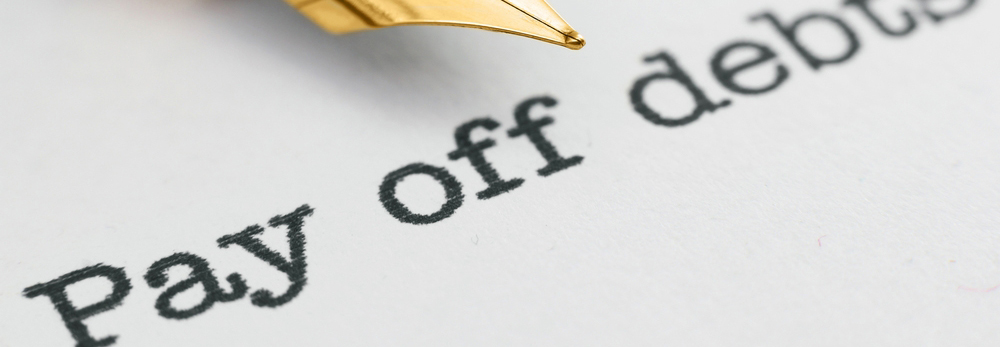

by eBridge author
Are you looking for a way to free up some cash in your budget? Lowering your mortgage payment is an excellent method to free up cash for other expenses.
Let’s take a look at all the different ways you might lower your monthly mortgage payment.
1. Refinance With A Lower Interest Rate
A reduced interest rate can save you a lot of money. For example, lowering the interest rate by 1% on a $200,000 30-year fixed loan can result in a monthly savings of over $120.
Keep an eye on the market if you want to lower your mortgage payment. Look for interest rates that are lower than your present one. Contact your lender to lock in your mortgage rate when rates drop.
Another option is to reduce your rate by purchasing points. Discount points on a mortgage are pre-paid interest that you pay as part of your closing costs to achieve a cheaper rate. Each point represents 1% of the total loan amount. One point, for example, would cost $2,000 at closing on a $200,000 loan. A mortgage point reduces the interest rate by.25 percent to.5 percent.
The length of time you expect to remain in the property will determine whether or not discount points make sense for you. If you only plan on staying in the house for a few more years, paying a somewhat higher interest rate is definitely less expensive. However, lowering your rate by half a percent over the course of a 30-year loan might save you thousands of dollars.
Keep in mind that a mortgage refinance is not the same as a mortgage recast, which is a lump-sum payment made against the remaining principal on your loan. Both, on the other hand, may present you with an opportunity to reduce your mortgage payment.
Some of the most popular refinance options, organized by loan type:
1. FHA Loan
If you’ve had an FHA loan for at least seven months, you may be qualified for a streamline refinance, which involves less paperwork. The lender will verify that you’ve paid your past six payments on time and that your assets are sufficient to cover closing charges. They will not, however, need to verify your income or evaluate the property.
2. USDA Loan
USDA loans may be eligible for the simplified assistance program if they are backed by the United States Department of Agriculture. The lender will check to see if you’ve made on-time payments in the previous 12 months and that your income is within the limit, but you won’t need a home assessment or a credit check to qualify. Ask your lender if you qualify.
3. VA Loan
VA loans: The Interest Rate Reduction Refinance Loan (IRRRL) program may be applicable to loans issued by the United States Department of Veterans Affairs. You’ll have to pay a lender fee, ask your lender the amount.
4. Conventional Refinance
For Fannie Mae and Freddie Mac-backed loans, there is no streamline refinance option. Your lender will check your income, review your bills, and draw your credit when you refinance your mortgage.
Refinancing is a good alternative if you want to lower your home payment. Simply shop around and look into as many lenders as possible. In only three minutes, Credible allows you to compare prequalified rates from our partner lenders in the table below.
2. Get Rid Of Mortgage Insurance
Mortgage insurance can increase a borrower’s monthly payment by a significant amount. Depending on the sort of loan you have, there are different ways to get rid of mortgage insurance.
Getting Rid Of The FHA Mortgage Insurance Premium
If your FHA loan was obtained after June 1, 2013, you will most likely be required to pay a monthly mortgage insurance fee (MIP). Putting down more than 10% means you’ll have to pay MIP for the first 11 years, but if you put down less than 10%, you’ll have to pay MIP for the rest of your loan’s life.
If you’re trapped with MIP, refinancing into a conventional loan may be your best option – but it all depends on your equity. If you have less than 20% equity in your house, switching from MIP to private mortgage insurance may be the only way to get a conventional loan (PMI). On the other hand, if you have 20% equity, you won’t have to pay PMI on a traditional loan.
You’ll need to know the value of your house to figure out how much equity you have. Your mortgage lender will want an appraisal of your home to evaluate its value when you refinance. When you refinance, your equity will be based on the current value of your property, not what it was when you bought it. Simply subtract your existing loan balance (how much you owe) from your current house value to determine how much equity you have.
Getting Rid Of Private Mortgage Insurance
You’re undoubtedly paying private mortgage insurance (PMI) as part of your monthly payment if you didn’t put down 20% on your property when you bought it. In the event that you default on your loan, PMI protects your lender.
A refinance isn’t always required to get rid of PMI. You can ask your lender to remove PMI if you have 20% equity in your property. There are a couple of factors to bear in mind here:
- Your lender will almost certainly require an appraisal if you’ve reached 20% equity as a result of your home’s worth increasing or extra payments.
- Lenders won’t demand an appraisal if you’ve reached 20% equity on your usual payment plan (i.e., you haven’t made any extra payments).
- Your lender must immediately delete PMI from your loan after you reach 22 percent equity according to your normal payment schedule.
If achieving 20% equity is still a stretch, a refinance with lender-paid mortgage insurance (LPMI) could help you avoid monthly PMI payments. With LPMI, you have the option of paying PMI in one single payment or paying a slightly higher interest rate. Because mortgage interest is deductible, but PMI is not, this allows you to save money.
3. Extend The Term Of Your Mortgage
If you want to lower your monthly payment, you can do it by extending the term of your mortgage with a new loan or a loan modification. The loan total is spread out over more payments with a longer mortgage term.
Here’s an illustration: Assume you purchased your home 10 years ago with a $200,000 30-year fixed-rate loan. Your payment, at 4.5 percent interest, is $1,013, excluding taxes and insurance.
Let’s imagine you wish to reduce your monthly mortgage payment. You’ve paid off your debt in ten years, bringing the sum down to around $160,000. You might spread the lesser sum over 30 years by arranging a new 30-year fixed loan. At the same interest rate, your new payment would be $811. That’s a monthly savings of almost $300.
4. Shop Around For Lower Homeowners Insurance Rates
Pay your homeowners insurance as part of your monthly mortgage payment? Shopping around for a lower rate may be an easy way to save money.
To receive rates, call around to several insurance providers and don’t be afraid to ask for discounts. Certain aspects of your home, such as security systems and fire alarms, may allow you to save money. Based on your employer or job status, you may be eligible for a discount. Bundling your house insurance with your vehicle insurance and other products may also help you save money.
You can also check your coverages to be sure you’re not paying too much for coverage you don’t require. Raising your deductibles, if you can afford it, is a certain method to keep your premiums low. If you’re decreasing or deleting anything, be sure you know what coverage your lender requires. A good insurance agent can help you save money while still covering all your bases.
5. Appeal Your Property Taxes
If your mortgage has an escrow account, you’re likely paying your property taxes as part of your monthly mortgage payment.
Your property taxes are determined by the county’s tax assessment. After a thorough examination, the assessor calculates the worth of your home and land. If your home is overvalued by the assessor, you’ll end up paying more taxes than you need to.
You can typically figure out your property’s assessed value by checking at your tax statement or going to the website of your local county records office. You have the right to contest the assessment if you believe your home is overvalued. Bring a list of recently sold similar homes or, if you have one, an appraisal. Cheaper property taxes and a lower monthly mortgage payment may result from a decreased assessment.
How to lower your mortgage payment while closing on a loan
If you’re still shopping for a mortgage, there are plenty of methods to save money on your monthly payment.
1. Make a larger down payment
If you borrow less money from the start, your mortgage payments will be smaller and your interest rate will be lower. The loan is predicated on a lower balance. And if you put 20% down on a conventional loan, you escape PMI.
2. Improve your credit score
Your mortgage rate is determined by a number of criteria, including your credit score. A lower interest rate can also help you save money on your mortgage payment.
Borrowers with credit scores in the mid-700s and higher usually get the best prices. However, even a minor bump can assist.
3. Choose an Adjustable Rate Mortgage (ARM)
If mortgage rates are extremely low, you may choose to refinance to an adjustable-rate mortgage to minimize your monthly payment. When acquiring an ARM, think about future payments. If mortgage rates rise before your rate resets, your mortgage rate and payment will climb.



